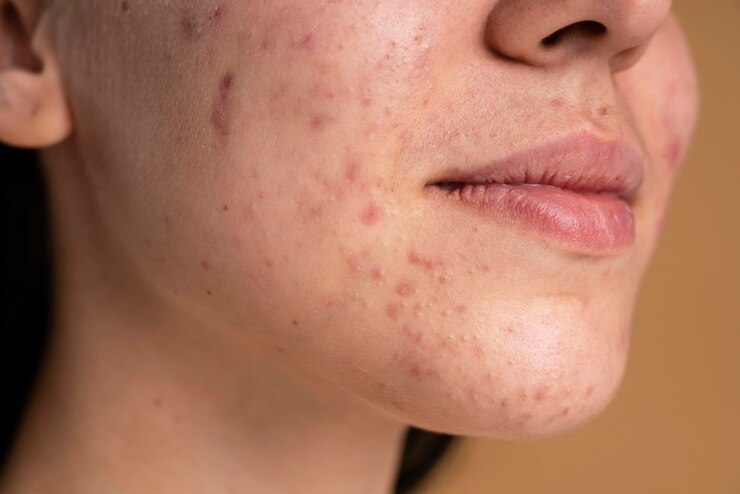
Dealing with acne can be tough enough, but sometimes it leaves behind visible scars, which can be just as frustrating. These scars can affect how we feel about ourselves, but the first step to managing them is understanding what they are and how they develop. If you’re not familiar with the types of acne scars, don’t worry—here’s a simple guide to help you learn more.
Types of Acne Scars
Acne scars, much like an unwelcome mess, can appear in different forms. Some are mild and easy to address, while others may require professional treatments. Tackling acne while it’s still active is ideal to prevent scar formation, but if scars do appear, here’s what you need to know about the common types and their treatment options.
1. Atrophic Scars
These are common and appear as shallow depressions on the skin’s surface. They typically form after severe acne, like cystic breakouts, but can happen with other types as well. Atrophic scars are broken into three subcategories:
– Ice Pick Scars:
These are narrow, deep scars that resemble tiny punctures on the skin, often caused by intense inflammation during acne. Treatments like punch excision, where the scar is removed and the skin is reconnected, can help minimize their visibility. While this method may leave behind small marks, they tend to blend better with the surrounding skin.
– Boxcar Scars:
Boxcar scars are round or oval with steep edges, giving the skin a pitted, uneven texture. They’re caused by the destruction of collagen and loss of skin tissue. Dermal fillers are a common treatment to help level out the scarred areas and make the surface smoother.
– Rolling Scars:
These scars create a wave-like appearance on the skin due to fibrous bands pulling the surface layer down. Subcision, a procedure where these bands are cut to allow the skin to lift, is an effective option for smoothing out rolling scars.
2. Hypertrophic and Keloid Scars
Unlike atrophic scars, these involve an overgrowth of tissue due to trauma.
– Hypertrophic Scars:
These appear as raised scars, often localized to the original wound area, and are more common on the chest and back.
– Keloid Scars:
Keloids extend beyond the boundaries of the original acne area, forming larger, raised marks. They occur when the skin continues producing collagen even after the wound has healed.
Treatments for hypertrophic and keloid scars include silicone gels, steroid creams, cryotherapy, injections, and laser treatments. The chosen approach depends on the scar’s severity, but it’s important to opt for gentle treatments to minimize the risk of triggering new scars.
Moving Beyond Acne Scars
Acne scars can feel like a constant reminder of past breakouts, but there are many effective solutions available. With the right knowledge and proper treatment, you can restore your confidence and improve the appearance of your skin. If you’re unsure where to start, consulting a dermatologist for guidance is always a smart move.